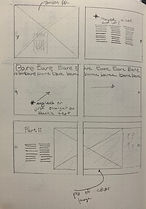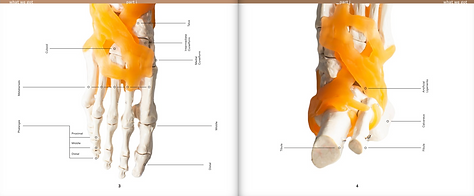Bare - Print AR use case
Product design, photography, ideation & print
Project detail
Team
i. Jeffrey Gomez - Designer
Emerson Fitzgerald - Designer
Parker Jaten - Research/Copy
Jake Davis - Research/Copy
ii. What We’ve Done
Thumbnail Sketch
Brainstorm
User research
User interviews
Design
UX/UI Design
Strategy
iii. What would make it a success
Works within user’s mobile phone framework
“Living books” capable of enhancing learning
Capable of updates after the fact









Problem
Present scholarly research in a way that is accessible to all.
With higher education becoming more unattainable for some (cost, geolocation, unequal access to support structures/resources, etc). It is clear that in order to end these inequities more flexibility and action on the part of those seated in places of power inside the establishment of higher education will be required.
Examples of these needed flexibilities and or possible solutions are; truly remote and or flexible curriculum, lowered cost, Associates degrees being offered in public K-12, free tuition for community colleges and or Associates degrees, extending and expanding the maximum tax credit under the American opportunity tax credit and the lifetime learning credit, and the list goes on and on.

Approach
Using AR technology to supplement and update the teaching within higher education.
With our chosen topic of barefoot running and its effects on the human body we set off to create an immersive experience that would supplement the research conducted. As the designer I began with a mood board to form a coherent footing. Inspiration, examples of similar products currently on the market, color palette, typeface ideas, etc. I wanted the book to be clean and modern to directly tie to the aspects of health and medicine being talked about in the research papers. From this design ideation I was able to present my thoughts to the team and together we decided to go with my design pitch.
Emerson and I came together several times to brainstorm and develop AR functionality to see where we could incorporate a more immersive experience. For this we used a software suite called Zapworks. We would build out the functionality and test it within Zapworks' preview tool Zappar before generating our Zapworks code that was essentially a QR code we would embed somewhere within our book where we wanted the AR functionality to appear.
This was tricky to get exactly right. Let's say you have a video you wanted to pop up when the user scanned the Zapworks code you could choose to have the video pop-up within the book or have it pull up a link to the video on their phone. You'd have to map our how large a screen you'd like to give your video on the page and have essentially look at the video through the distance of their phones' camera to the book. Obviously, for this reason, we decided to keep videos as links
After that, and once the copy was handed over by our writers, I looked into how I could organize this information to not only display it well but present it in an interesting and coherent way to the reader.


Solution
On clean white we create an AR rich book for everyone.
After several iterations. Creating and embedding a few animations, slideshows, 3D objects, and websites. Voila. We have an AR rich book with the ability to travel back within the software and update the features as we see fit or as certain things become irrelevant, broken, or simply need updating.
In all our book contained:
-3 unique animations
-2 photo galleries
-1 3D object (an atomically correct foot model of bones)
-2 videos
-and 2 curated website links (a map of nearby running trails, and a Spotify playlist called Barefoot Running).
This was of course added to photos and the actual research content that readers would also enjoy throughout the book.
If similar methods of AR functionality were applied to gargantuan textbook industry complex there would be less of a need to have users purchase new and more expensive editions for simple updates to a few pages.
And due to this digital age you can simply click on any of the pages on the left to be taken to a digital rendering of our printed book.


